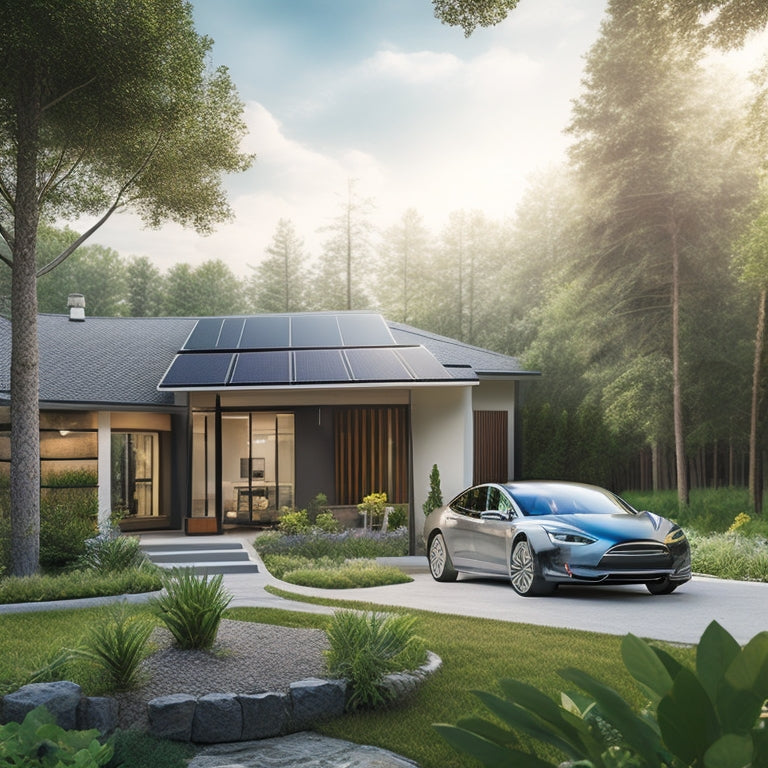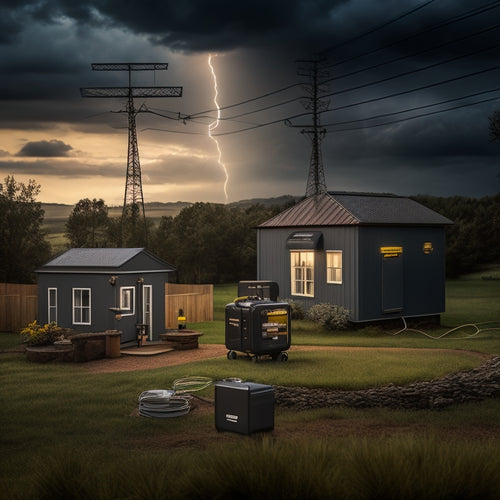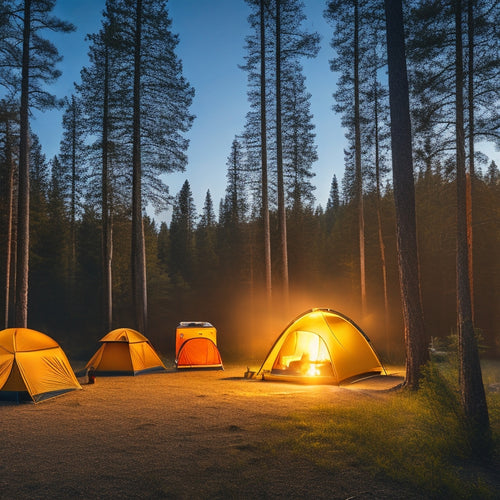
Renewable Energy Solutions for Homeowners
Share
You can reduce your reliance on the grid and lower your utility bills by up to 50% by investing in the right renewable energy solution for your home. Solar power systems are a popular choice due to their reliability and potential to generate excess energy. However, wind energy, geothermal heating, and DIY projects like wind turbines and hydroelectric generators are also viable options. To maximize efficiency, start by conducting an energy audit to identify areas of waste, and consider upgrading insulation, windows, and doors. By exploring these solutions, you'll be well on your way to utilizing the power of renewable energy and creating a more sustainable future for yourself.
Overview
- Homeowners can reduce energy consumption through energy audits, smart thermostats, and insulation improvements for a more efficient home.
- Solar power systems with high-efficiency panels and net metering benefits can provide energy independence and lower electricity bills.
- Battery storage solutions, such as lead-acid and lithium-ion batteries, capture excess energy for nighttime or outage use, increasing self-sufficiency.
- DIY renewable energy projects, including wind turbines and hydroelectric generators, offer cost-effective solutions for homeowners to generate their own energy.
- Geothermal heating and solar power are reliable, environmentally friendly options that can be tailored to rural or urban settings, reducing carbon footprints.
Renewable Energy Options Compared
As you venture into the domain of renewable energy, a multitude of options unfold before you, each with its unique benefits and drawbacks.
You're likely considering wind energy, which utilizes the power of air currents to generate electricity. This option is ideal for rural areas with consistent wind patterns, but may not be suitable for urban environments due to noise and aesthetic concerns.
Solar power is another viable option, offering reliable energy and reduced carbon footprint solar power solutions, which can be particularly beneficial for rural areas.
Alternatively, geothermal heating employs the Earth's natural heat to provide warmth and hot water. This method is environmentally friendly and cost-effective, but requires significant upfront investment in infrastructure.
Energy Efficiency at Home Starts
You've weighed the pros and cons of various renewable energy options, and now it's time to focus on making your home more energy-efficient.
Energy efficiency starts with understanding where energy is being wasted. Conducting an energy audit can help identify areas of improvement, such as insulation, windows, and doors.
To guarantee peak resource allocation, it's vital to categorize energy loads into essential, semi-essential, and non-essential.
Installing smart thermostats can also enhance your heating and cooling systems, automatically adjusting temperatures when you're not home or when you're sleeping.
Solar Power Systems for Homes
By virtue of their abundance and accessibility, solar power systems have become an increasingly popular choice for homeowners seeking to reduce their reliance on fossil fuels. You can take advantage of this renewable energy source by installing solar panels on your rooftop.
A solar panel installation can greatly reduce your electricity bills, and you may even generate excess energy. With the help of high-efficiency panels and deep cycle batteries, you can guarantee a steady power supply even during periods of low sunlight.
With net metering benefits, you can sell this excess energy back to the grid and offset your consumption during periods of low sunlight. This not only reduces your carbon footprint but also increases your energy independence.
Battery Storage for Renewable Energy
With renewable energy systems generating power intermittently, homeowners need a reliable way to store excess energy for later use. You can achieve this through battery storage, which allows you to capture and store energy during the day for use at night or during power outages.
There are various battery types to choose from, including lead-acid, lithium-ion, and saltwater batteries, each with its own advantages and disadvantages. When selecting a battery, consider factors such as capacity, depth of discharge, and lifespan.
Installation costs vary depending on the type and capacity of the battery, as well as the complexity of the installation. On average, you can expect to pay between $5,000 and $15,000 for a battery storage system.
DIY Renewable Energy Projects
Considering your interest in renewable energy solutions, taking matters into your own hands through DIY projects can be a cost-effective and enabling way to reduce your carbon footprint.
By utilizing wind or water energy, you can generate electricity and save on utility bills. A wind turbine, for instance, can be installed on your property to capture wind energy and convert it into electrical power.
Similarly, if you have a stream or river nearby, a hydroelectric generator can be used to utilize the energy of flowing water.
With proper planning and execution, DIY renewable energy projects can provide a sustainable and independent source of energy, giving you more control over your energy consumption and costs.
Frequently Asked Questions
Can I Sell Excess Energy Back to the Grid?
You can sell excess energy back to the grid through net metering, earning energy credits that offset your consumption. This benefit allows you to generate revenue, reduce bills, and enjoy greater energy independence, giving you more control over your power usage.
Are Renewable Energy Systems Covered by Homeowner's Insurance?
You'll want to review your homeowner's insurance policy to guarantee your renewable energy system is covered, as policy exclusions may apply; factors like installation costs, equipment types, and liability concerns can impact coverage and the claims process.
Can I Install Renewable Energy Systems in a Rental Property?
When renting a property, you'll face installation challenges, so it's essential to obtain written permission from your landlord and negotiate tenant agreements that outline responsibilities and benefits, ensuring a harmonious and sustainable coexistence.
Do Renewable Energy Systems Require Regular Maintenance?
You're probably thinking renewable energy systems are a "set it and forget it" deal, but ironically, regular maintenance is essential - it's what guarantees system longevity and peak performance, with maintenance frequency varying depending on the system type and usage.
Are There Government Incentives for Renewable Energy Installations?
You'll be happy to know that, yes, government incentives exist for renewable energy installations, including federal tax credits and state rebates, which can greatly offset your upfront costs, giving you more freedom to invest in a sustainable future.
Ready to Buy
You've examined the world of renewable energy solutions for your home, from energy-efficient habits to solar power systems and battery storage. As you commence on this sustainable expedition, remember that every small step counts. In fact, if just 1% of the world's roofs were equipped with solar panels, it could power 100 million homes - that's the equivalent of taking 25 million cars off the road! Now, it's time to utilize the power of renewable energy and create a greener future for yourself and generations to come.
Related Posts
-

Key Components of a Reliable Emergency Power Supply System
A reliable emergency power supply system requires several key components. You need proven performance metrics to guar...
-

Top Camping Water Bottles for Adventure
When you're out adventuring, picking the right camping water bottle is essential for staying hydrated. Look for durab...
-

Top Solar Powered Camping Fans for Camping Enthusiasts
If you're a camping enthusiast, a solar-powered fan can be a transformative element for your outdoor experience. Thes...


